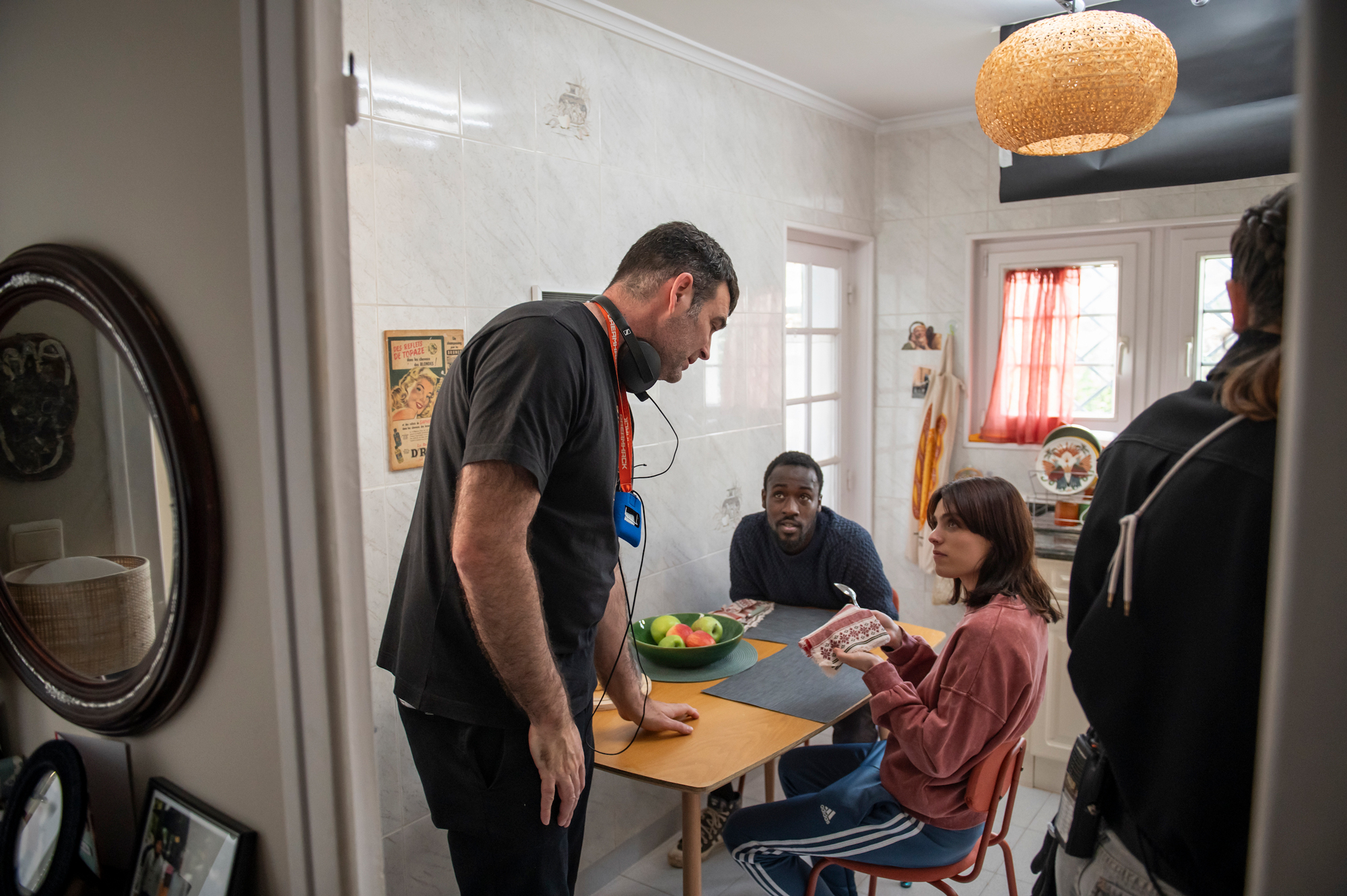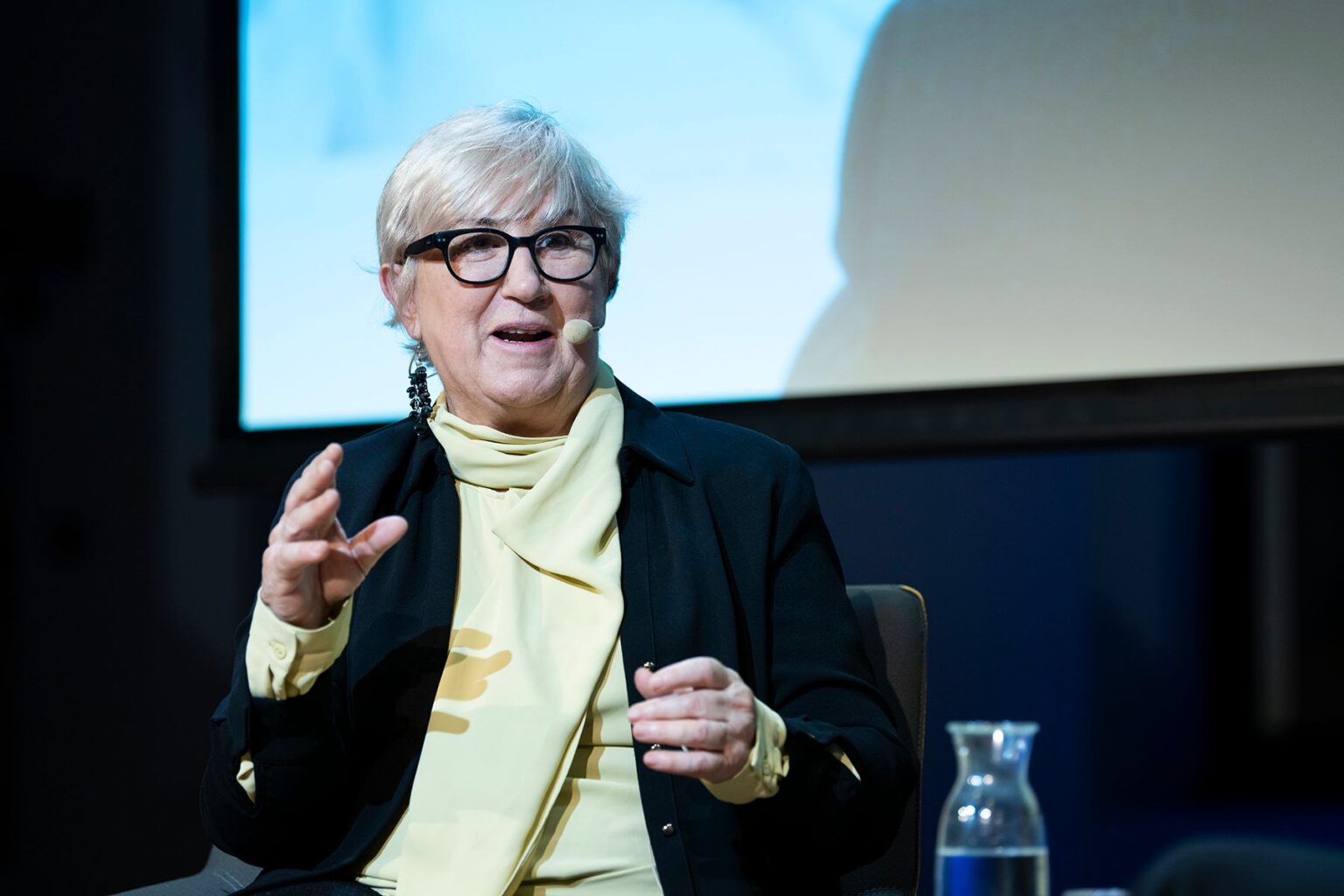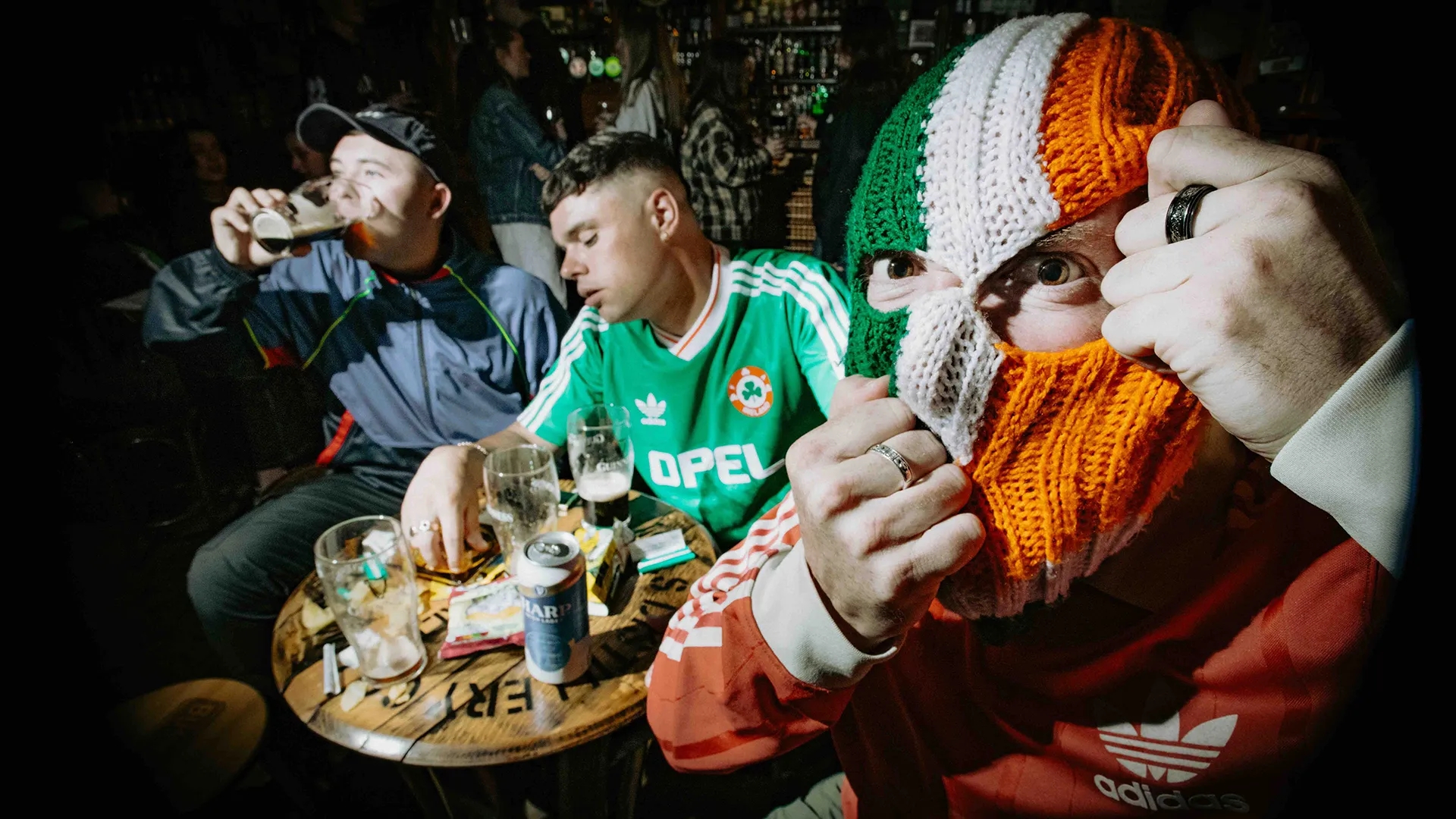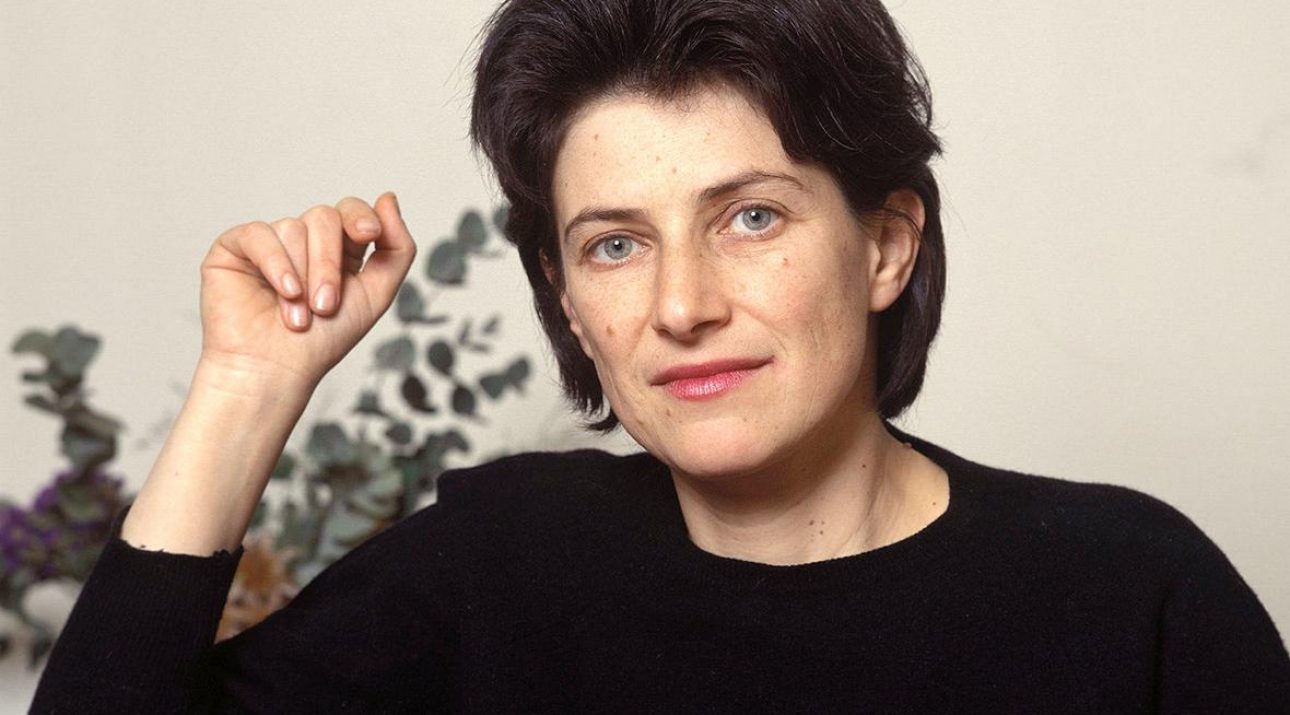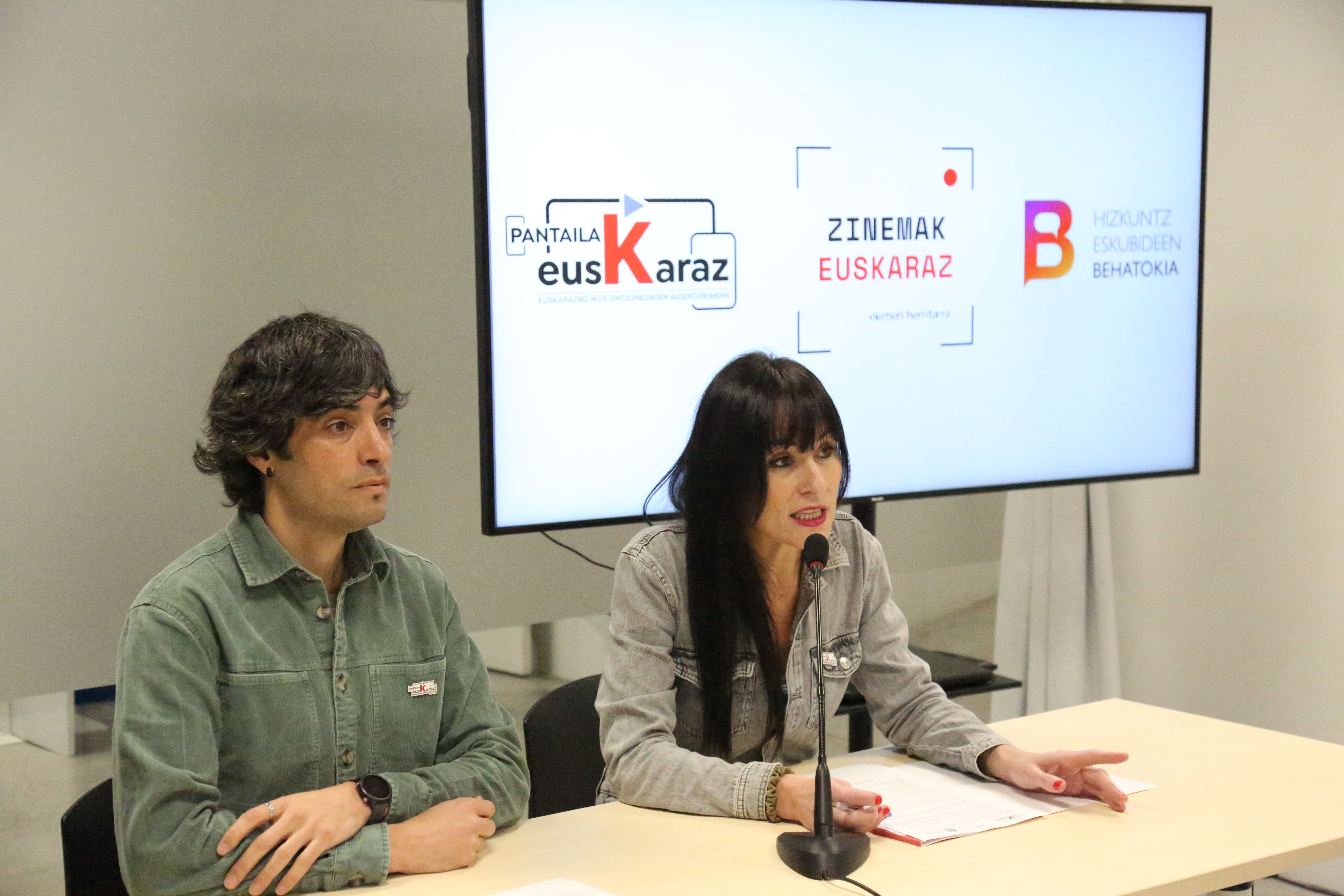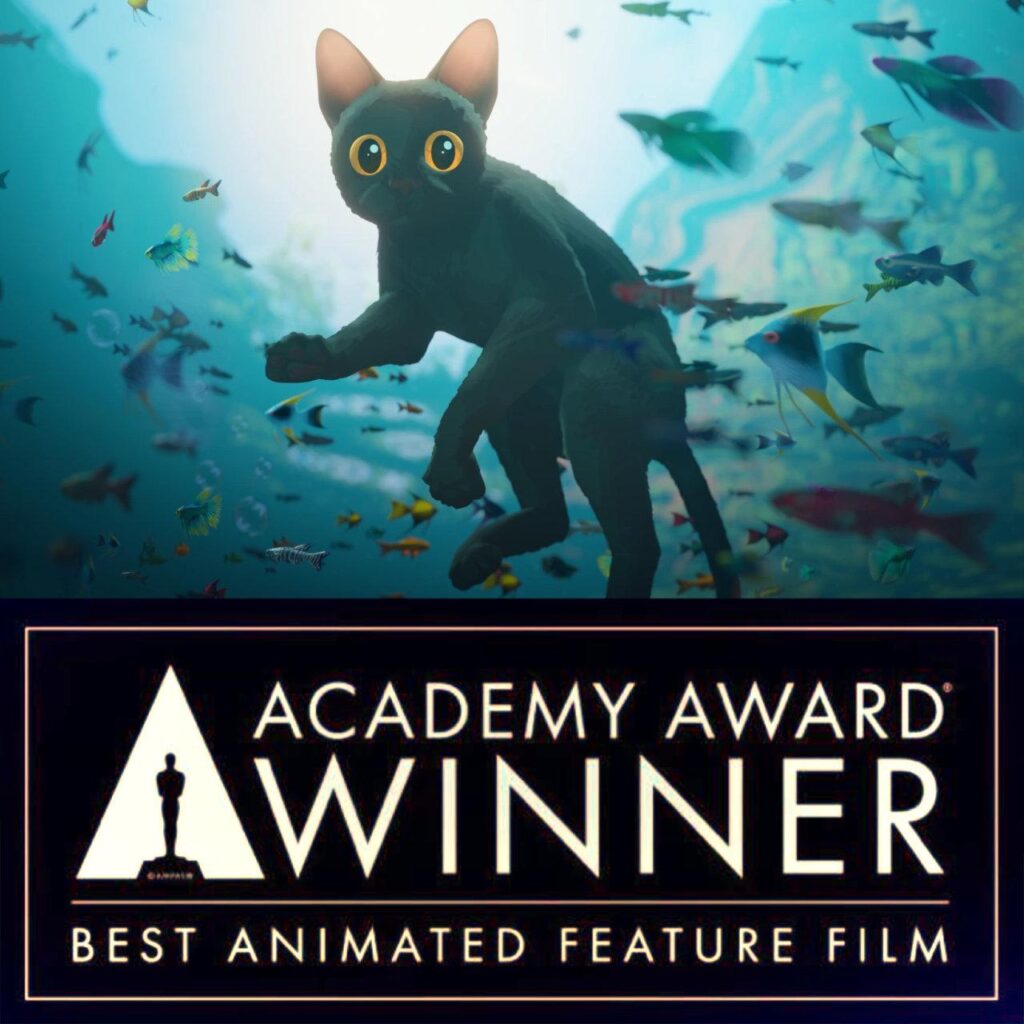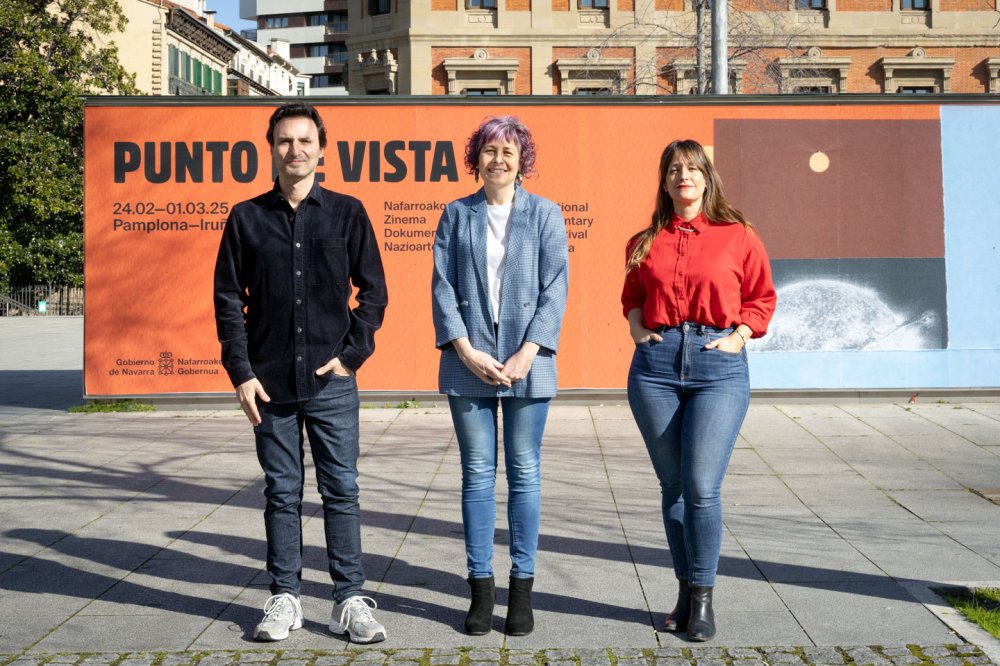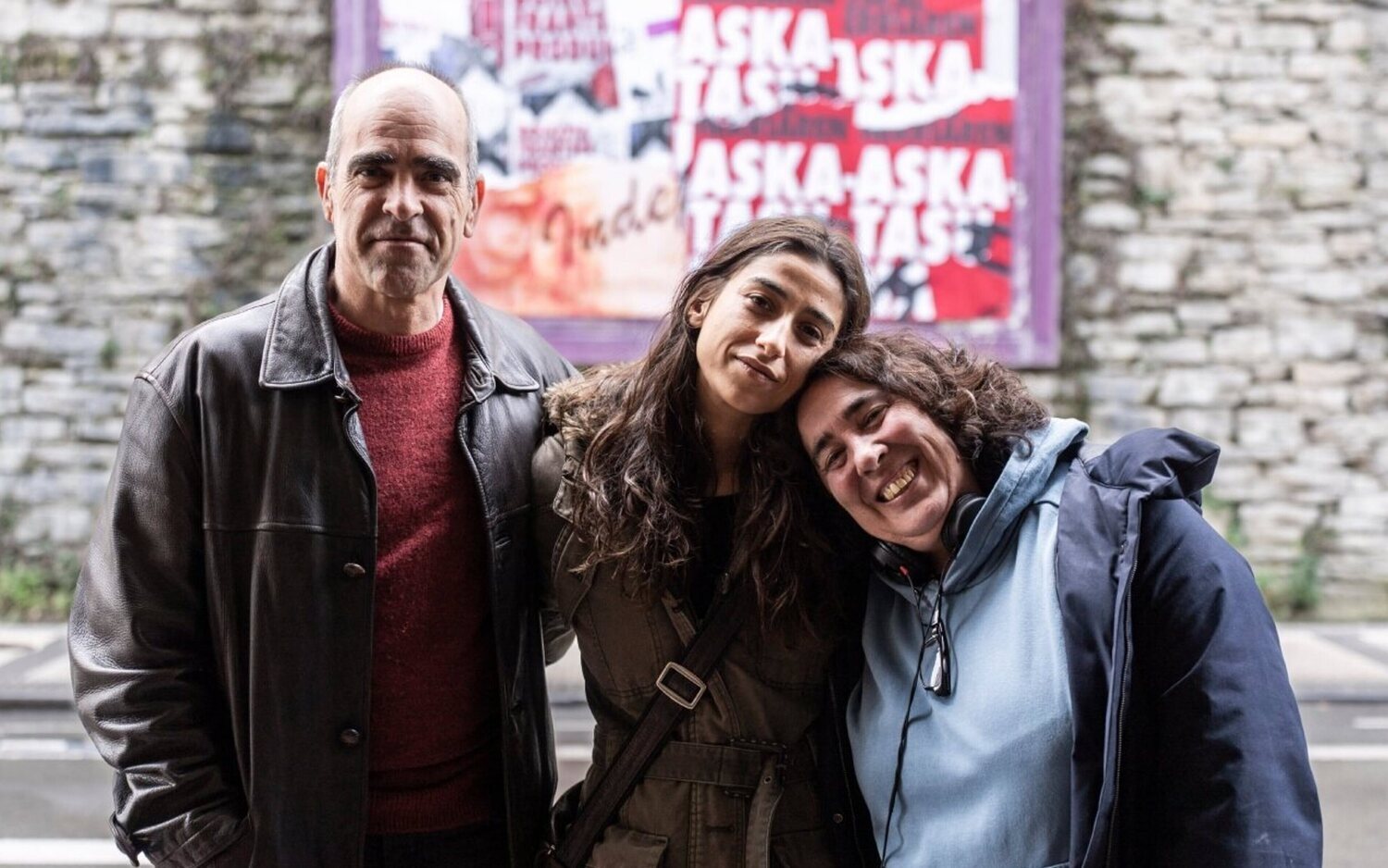"We're all guilty, we've all believed the religion of cities."
- Compare your film with a warm, simple and complex soup or soup at once. Less appreciated in postmodern times full of sugar and chemistry, but it offers a vital refuge. At the Cannes Film Festival, critics and audiences were led by the movie O that burns. After passing through the San Sebastian Film Festival, the fire left a fine and deep steam. Cinema is already in commercial theatres.

Amador doesn't wait for anyone to leave jail. He has served the punishment for causing a fire and Benedicta returns home to his mother, a woman who has lost in a valley in Lugo. The pace of the day will be slow, until a new fire appears. Or that he played the festival of Cannes enthusiastically and was awarded the jury of the Un certain regard section. Since then, Oliver Laxe, the author of the film, has been festival in festival. It welcomes us at the San Sebastian Film Festival in a luxurious terrace of a luxurious hotel, far from the modest geography of its film and its film.
Fire and film have parity, right?
Yes, Pier Paolo Pasolini said that cinema is the writing that is made on a burning paper. You have to make a movie with fire. The filmmaker's trade is a supine trade. The filmmaker has to live the excess itself. The films must be made in the middle of the fire, in the middle of the inner fire.
Not only in the midst of the interior hogueras, in the movie O that burns you have shot a great forest fire. It has to be one of the most complicated sequences to roll. How did you set up that shoot?
Well, we prepared it thoroughly, after several theoretical and physical studies. I mean, we put ourselves in the skin of a firefighter, after all, we learned how to be firefighters. During the hours we spent in an off-road field, a team person was moving through the province, Lugo, to see where the fire appeared, where the fire was lit. Of course, we had the help of the institutions and the Galician Xunta, and as soon as we received the information, we appeared in fire dresses and with the cameras in the place where the fire was. We stood behind the brigades and lived and raised the fire.
"The scarce spirituality we can have today, unfortunately, we can have it through art"
There's a parallel between landscape and characters. They seemed brutal, shadowy, silent, but inside they burned a big bonfire.
Yes, something similar is said about the Basques, right? Behind these landscapes and these characters are hidden many subtleties, nuances and carines. Behind those silences and gestures there are many lives, there is fire. The two characters, mother and child, are truly full of life. Above all, it is a love story between a mother and her son, a rural tale. Although Amador has a winter and introverted part, it seems to me a very free and beautiful person. I don't know how many of us would take care of our 85-year-old mother.
The film may also suggest that each of us hides a pyromaniac…
We are all guilty. We've all believed the religion of cities. We have all contributed to the desertion of the rural environment, to the climate emergency… In Galicia we have a great field and we do not offer any future, and as I feel guilty, I am not very interested in Amador being guilty or not.
A humanist story goes beyond that perspective of judging the character.
I think yes, despite their flaws, their silences, their dryness and everything, I really like it, I'm thrilled. This grandmother is a kind of woman in my family, and I feel the affection of the lonely men in the mountain area, who have a lot of sensitivity, but who don't have the tools to live in this world. Because this world does not accept fragility.
The rural world is not glossy, but it is not demonised either. You can see affection and respect.
I was very scared that my gaze was urban. It may be because my parents are from that environment of Lugo, I also inhabit that massif, because I have lived there for a long time, because I have very much in mind the model of my grandparents… But, I would say that I idealize it. The filmmaker has to be idealized. If we do not idealize, we are doing our work badly. We must evoke it. I idealize the rural environment in this sense, but I also show their crudities… And, unfortunately, there is no longer so much distance between the rural environment and the city. The good thing about the countryside, the good thing about nature is that when it's strong, like on the Cantabrian axis, it puts everything in place over time, and makes you feel small, and feeling small is a very healthy thing, something you can't live in cities. My characters also feel small, but they do well like that, they don't feel distress. Sometimes nature reassures you and disturbs you.
What tools have you used to avoid the urban gaze?
I know how they cut bread in this environment, I know how to talk to cows… In Galicia they seek blood in the cities, they want to be guilty, they want to know who the authors of the fires are; I also feel desperate when fires occur, I myself do the guilty search engine. The same is true of the subject of eucalyptus, the farmer who cultivates eucalyptus is exposed, judged… I, for example, would not plant eucalyptus, but I am not in the place of these farmers, and I can come to understand from my position that the farmer sees no other future than that of his land. I don't want to judge, I think if I judge, that's where our urban gaze prevails.
The rural world smells in the movie, palpates, feels deep inside. Is that the kind of movie you're interested in?
I'm interested to be very close to things, to forget about them, to have a very epidermal sensation. Very sensory. At Iparralde we really like to get wet. Therefore, I really like that physical cinema, tangible, but I also try to propose a trip to the viewer, suggest something… I look for evocation, a strange restlessness, tension, collision… There is something magical about nature and I try to evoke it. Therefore, in addition to the tangible, the cinema is, in addition to the bonfire, to insinuate what it remembers.
"I hope that, as we have become aware of food, a more bio-social awareness will develop with cinema and art"
The work also features the mold of an old story. Is one of the references the oldest story?
Yes, there's something telluric, something semimitological and even something Christian. There is a kind of martyr character that cleanses the community, who takes on the role of martyr… The most influential are the stories of my family, the stories, the oral stories… I remember the tragedies of the Galician emigrants that my grandparents told me and that they made these stories with great acceptance. They did it with great dignity and honesty. For me they have been an example, especially when you live in the infantilism of cities, in this terrible collective hysteria. My parents and I came from Paris to this valley of Galicia and there I became a filmmaker. There's hardly any roads to get to that place, a lot of values are being lost from here, and my film is an ongoing quest to work on my unconditional acceptance of that place. To capture this inevitable recognition of the lives of the local population. Being free is that indispensable recognition of life. Not going against the wave, but going with it as surfers in some way.
In addition to the Galician stories and the oral world, what cinematographic references have you had?
I have two filmmakers as true great teachers. Andrei Tarkovski and Robert Bresson. Tarkovski has given me the most key to working the relationships between the sacred and the artistic. I try to make my film something sacred or liturgical. The main goal of this film was to pay tribute to my old relatives. I think when you roll in the place where many generations of your family have worked, it has positive consequences. It makes you want or not, I wouldn't know exactly what.

There's a powerful image in the movie, when an older mother takes refuge under a tree. It could be a metaphor for cinema. Is film also a refuge?
Yes, in Galician there is a verb that expressly means protecting from the rain a tree: dyeing. I don't like metaphors very much, but film is a small temple, yes. Grandma takes refuge under the tree; there's the acceptance of life and nature that we were talking about before, there's also freedom. Cinema and art are the hidden engine of society. The scarce spirituality that, unfortunately, we can have today, we can have through art. It's a false spirituality, but there's more to it than the desert that goes through our lives. If we look at film and film in depth, some of them are oriented towards distraction and others towards destruction. Distraction or destruction…
Is there no room for construction, for creation?
People, the spectator, are generally regarded as a pure consumer, to whom, for years, an industrial sweetened bun has been given, composed exclusively of addictive, chemical and preservative products. Lots of sugar and poison. And when you try to give it a little rich soup, do you have it in porrusalda, when you give it a soup, you don't even like it, and so it's hard to get room for that constructive movie. Televisions, institutions don't protect this soptic cinema. But there's a gap for that movie, and you make soup movies, and there's an audience that has kept their palate clean, even though they've been vituperated with sugar. There is also the desire and desire for a more Bio-More film. In the same way that we have become aware of food, I hope that a deeper awareness will develop with film and art.
With this soup film, you have come to be awarded in Cannes.
Yes, I and my film are right at the heart of the movies, we are rewarded at festivals, we are recognized, we are not on the sidelines. There are others on the shores. It's amazing that almost anywhere you say that the older woman in the movie is known to you, that she reminds you of her grandmother, or that the protagonist is like her uncle, and that's what I've been told in Russia -- that's amazing. Inviting the spectator to have that echo, to such a trip, seems to me indispensable as a filmmaker. I want to make a movie like this.
It's a high-intention movie.
Well, I don't know, but I feel very small like my characters. If my film doesn't want to be seen by anyone, I'll accept it, as the characters embrace that landscape, with a free acceptance. But, I have one clear thing, I'm going to make essential movies.
And in Galician?
Yes, of course. Will that limit my diffusion? Well, maybe, but who has to make the movies and find their audience. If we look at the statistics and marketing, I'm sure I wouldn't make movies in Galician, but I've made the film almost without thinking about it, and look, we've come to Cannes and San Sebastian and so on. We do not have the habit of bending, few cinemas give films in the original and it is a pity that the sonority of so many beautiful languages is lost.
A striking contrast is that being from the postmodern generation, your gaze, your inner impulse, lies in the rural medium.
Yes, but I live that place, and that place lives entirely in me. In fact, I am currently working on a project with the help of the European Union and the province of Lugo: a rural pedagogical house in which I must create and organise various cultural initiatives in which I have been the home of my grandparents. First we have to restore the dwelling and then organize cultural activities. That house appears in the film for a moment. That's why you can consider O burning as a smaller part of a larger project. We want to resurrect and care for this valley, it is not a loose project! It's the valley bathed by the Being. Perhaps with this project I can reduce the sense of guilt a little. We want to revitalize this chestnut environment protected by Benedict.

It has just been explained that much of the Brazilian Amazon and many other parts of the world were burning…
Well, in Galicia there have always been fires, also in Euskal Herria, but we are not so media (laughing). The fire is serious… That the world goes wrong, that Bolsonaro and Trump appear almost see it within normal, that there is no clear look between the authorities, etc… But when nature goes wrong, something causes us great anguish: it happens with fires, it happens with pests… These fires are going to get worse, there is no doubt. They are believed to be sixth generation fires. They are unstoppable…
But what is most worrying is that there is suspicion that there are certain economic interests in these kinds of fires, which have been created by powerful companies and people and not by isolated pyromaniac…
Yes, it's everything. It is certainly behind this fire industry. In rural areas, almost everyone is incendiary, since fire is a tool for cleaning and relieving pastures, among other things. There are fewer and fewer people living in rural areas, droughts are getting bigger and bigger, and all of that makes fires easier, and the fire industry takes advantage of it. In Galicia, EUR 70 million is spent on fire-fighting. Helicopters, special suits, fuels, tools... and, on the contrary, how much is meant for prevention? Well, nothing. The paper industry, land recalification, political revenge… Pyrology itself is behind 3% of the fires. That is why I do not think it is right that it should be blamed on the field itself, that it should be demonised. All this is the result of the atrophies of modernity. That is why I do not think it right to blame Amador, to bear all the weight of the guilt.
"There has never been an artistic movement and a time when so many voices have met in Galicia, and we are also having an international echo"
Does Galician cinema need more institutional support and support or neglect complexes?
I believe that in Galicia there have been more complex and internal shame than in Euskal Herria and Catalonia, because in more moments of history we have been defeated by the lords and the powerful Castellanos. That is why the Galician has spoken mainly in rural areas. The task of parking the complexes is going to be greater in Galicia, but I think we are gradually getting there. And I think we're talking about film, especially. The movement is called Novo Cinema Galego, and there are some of us, and there's also a paradigm shift in the references. We used to look more at the cinema in Madrid and now perhaps we look more at the Portuguese cinema and the international avant-garde.
Who makes up Novo Cinema Galego?
Well, it's not an association or a club, you don't ask anyone for a membership card, but it's been a paradigm shift, we don't look at the movies that are made in Madrid compared to our predecessors. Here we are Berto Gracia, Lois Patiño, Diana Saucedo, Eloy Enciso, Eloy Domínguez, Saxo Baños, Xurxo Chirro, Andrés Goteira... 10-15 years ago the panorama was much worse, the cinema was made in Madrid, and the copy that was made outside in Madrid.... However, we follow the contemporary international avant-garde, we know what is being done abroad. We've learned outside and we've come back, and we've approached the rural area. Nature. We are more skeptical of modernity, of the myth of city and development. There has never been an artistic movement and a time when so many voices have met in Galicia, and we are also having an international echo. We were a generation in literature, but now we're building something nice in film.
What did you feel when a Galician film is echoed and praised internationally, for example, in Cannes?
It was a beautiful thing. I believe that we in Galicia tend to take things to the right extent, as a result of the presence of the periphery. We know we don't distinguish ourselves, we know we die in some way. Pride, pride, it's not a value that I love too much, but it was nice considering that Galician is a minority language. I believe that in Galicia it will produce some emotion, some psychological and social restructuring. The people from the place where we've filmed are happy with the movie It's a very degraded place, and that happiness fills me with a lot.
How a filmmaker like you feels. A committed, simple and complex film, which poses, in a spectacle space like the Zinemaldia?
Well, there's a space for everything. It has been difficult to reach such a showcase, because I have been stuffed with my film. I have been doing well internationally, and that has led me to other places, including San Sebastian. Almost everything is distraction in these kinds of initiatives, but I prefer to be, you have to be of this world without being. It's not the reality but there is, and so I accept it, it's also a free acceptance (laughter).
Profile
No other land dokumentalaren zuzendari Hamdan Ballal kolono sionistek jipoitu zuten astelehenean bere herrian, beste hainbat palestinarrekin batera, eta Israelgo militarrek eraman zuten atxilo ondoren. Astarte goizean askatu dute.
Donostiako Tabakaleran, beste urte batez, hitza eta irudia elkar nahasi eta lotu dituzte Zinea eta literatura jardunaldietan. Aurten, Chantal Akerman zinegile belgikarraren obra izan dute aztergai; haren film bana hautatu eta aztertu dute Itxaro Bordak, Karmele Jaiok eta Danele... [+]
35 film aurkeztu dira lehiaketara eta zortzi aukeratu dituzte ikusgai egoteko Euskal Herriko 51 udalerritan. Euskarazko lanak egiten dituzten sortzaileak eta haiek ekoitzitako film laburrak ezagutaraztea da helburua. Taupa mugimenduak antolatzen du ekimena.
Pantailak Euskarazek eta Hizkuntz Eskubideen Behatokiak aurkeztu dituzte datu "kezkagarriak". Euskaraz eskaini diren estreinaldi kopurua ez dela %1,6ra iritsi ondorioztatu dute. Erakunde publikoei eskatu diete "herritar guztien hizkuntza eskubideak" zinemetan ere... [+]
Geroz eta ekoizpen gehiagok baliatzen dituzte teknologia berriak, izan plano orokor eta jendetsuak figurante bidez egitea aurrezteko, izan efektu bereziak are azkarrago egiteko. Azken urtean, dena den, Euskal Herriko zine-aretoak gehien bete dituztenetako bi pelikulek adimen... [+]
Otsailaren 24tik eta martxoaren 1era bitartean, astebetez 60 lan proiektatuko dituzte Punto de Vista zinema dokumentalaren jaialdian. Hamar film luze eta zazpi labur lehiatuko dira Sail Ofizialean; tartean mundu mailako lau estreinaldi eta Maddi Barber eta Marina Lameiro... [+]
A conference for architects has just been held in Madrid to discuss the crisis of the professional architect. They have distinguished the traditional and contemporary way of being an architect. What is traditional? From the epic architect who appears in The Brutalist, where... [+]








